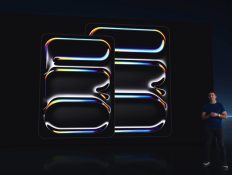By providing your information, you agree to our Terms of Use and our Privacy Policy. We use vendors that may also process your information to help provide our services. This site is protected by reCAPTCHA Enterprise and the Google Privacy Policy and Terms of Service apply.
How to Know the Difference Between Dark Spots and Sun Spots

I’ve had freckles and moles for as long as I can remember. But within the first few years of my early 20s, I noticed they began to increase. I didn’t think much of it until my even complexion started to change, too. Well, after visiting an aesthetician with the hopes of clearing up my skin, it was revealed to me that both sun spots and dark spots had prime real estate on my skin.
If you’re in the same boat I once was and have no idea what either of those things is nor whether they’re bad or good, we consulted with a skin-care expert for the facts. Ahead, he provides clear-cut definitions, the differences between them, and how to treat.
MORE: Skin-Care Ingredients That Play Nice With Each Other
Sun Spots
For starters, beach bums aren’t the only ones that get them. In the simplest terms, “a sun spot is a spot or discoloration due to the sun,” says Stanley Kovak, MD, cosmetic physician at Kovak Cosmetic Center. “When the skin is exposed to excessive sun, it responds by creating an excess in melanin, which creates a brown area on the skin.”
Sun spots are typically light in color, very thin, not raised from the skin, and can range in size from a very tiny dot to a larger spot the size of a coin.
The obvious way to prevent these from developing is through proper sun protection on a daily basis. If you’re planning a full day in the sun, opt for wearing a hat that will provide adequate shade and bring along a travel-friendly sunscreen to reapply throughout the day.
MORE: A Skin-Care Expert Describes Every Stage of a Dark Spot
Dark Spots
Like a sun spot, a dark spot is a form of discoloration on the face. However, the clear difference between the two is the root of the cause.
“Dark spots can be a sun spot but can also be caused by other factors,” says Dr. Kovak. If the unwanted mark is not a sun spot, it could be due to a birthmark, a mole, or a form of hyperpigmentation that has been caused by a breakout or blemish.
While any form of spotting might be visible on women with fairer skin, women of color have a higher chance of retaining a dark spot due to trauma such as inflammation, friction or scratching, all of which can result in a brown discoloration on the skin. For example, if a woman of color had a pesky blemish pop up and it became red or inflamed or she tried to pop the pimple, it is likely that it will result in a brown spot once it has healed. This type of dark spot is called acne-caused hyperpigmentation.
While some forms of dark spots can be genetic, acne-induced dark spots and other scars can be treated before healing to lessen the appearance of the scar. Once the inflammation has occurred, apply a topical ointment or medicated cream to not only rid the skin of bacteria but soothe and treat the infected area, too.
MORE: Everything a Beginner Should Know About Chemical Peels
Treatment
No matter which spot you’re trying to treat, it’s best to visit a dermatologist or aesthetician before starting any treatment process. If you prefer a cosmetic procedure, laser treatments can help diminish spots by either breaking up the pigmentation or lightly peeling off the thickened skin and bringing it back to a flat appearance, but these procedures must be done with expert guidance.
“Some people can be treated with laser treatments, but it has to be done carefully,” advised Dr. Kovak. “If not done properly, lasers can worsen some brown spots or result in hypopigmentation. Other popular treatments include microdermabrasion which uses a sander-like tool to remove the thicker, outer layer of the skin, and chemical peels, both of which are are pain-free solutions to a brighter and more even skin tone.
The best (and easiest) over-the-counter solution is sunscreen. Not only will it help prevent future spots, but it will protect against already-existing spots getting worse due to the harmful sun rays.
MORE: Why Skin-Care Experts Keep Telling You to Exfoliate
When purchasing sun protection, there are two types of SPF: chemical and physical. “A chemical block uses several different chemicals by absorbing into the tissue and changing the effect of the UV ray so it is less damaging to the skin,” shares Dr. Kovak. “A physical block will use either titanium dioxide or zinc oxide and sit atop the skin to physically block light coming through the skin.” You may find that physical sunscreens have thicker, more opaque formulas while chemical sunscreens tend to be lighter weight. Dr. Kovak suggests a combination of the two, with a layer of the chemical block first, topped with a layer of the physical block.
In addition, there are medicated creams and exfoliators that help slough off dead skin and promote cell renewal. Don’t let a spotted complexion get you down. Visit your dermatologist to see which of these solutions would be best for you.
By providing your information, you agree to our Terms of Use and our Privacy Policy. We use vendors that may also process your information to help provide our services. This site is protected by reCAPTCHA Enterprise and the Google Privacy Policy and Terms of Service apply.





















